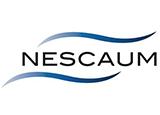Air Resources
Achieving and maintaining air quality in New Hampshire that is protective of public health and our natural environment.
 Congress designed the Clean Air Act (CAA) to protect public health and welfare from different types of air pollution caused by a diverse array of pollution sources. The CAA assigns the primary responsibility for air pollution control to state and local governments.
Congress designed the Clean Air Act (CAA) to protect public health and welfare from different types of air pollution caused by a diverse array of pollution sources. The CAA assigns the primary responsibility for air pollution control to state and local governments.
Many of the day-to-day regulatory functions and contact with sources of air pollution in NH occurs at the state level under provisions of the New Hampshire state implementation plan (SIP) and state statutory authority. Initially, state implementation plans were the mechanism by which states set emission limits and allocated pollution control responsibility among sources to meet the limits on ambient concentrations of criteria pollutants.
This was accomplished through a process that involved collecting emission inventory, monitoring ambient pollutant concentrations, modeling emissions to determine reductions needed to attain the national ambient air quality standards (NAAQS) and imposing appropriate emission limits on new and existing industrial sources.
These functions continue today but after the CAA Amendments of 1977 and 1990, the responsibilities broadened to also include implementation of many specific technology-based emission standards, permitting of sources, collection of emission report and fees, coordination of air quality planning with highway and mass transit planning, and prevention of significant deterioration of air quality.
Simplify your annual air emissions reporting with “SLEIS” (State and Local Emissions Inventory System).
Coming in January 2025, air permit holders can take advantage of a new, online annual emissions reporting system. For more information visit: https://www.des.nh.gov/air/industrial-sources/compliance-reporting
Real-Time Data
Resources
Related Content
Working to Achieve and Maintain Clean Air
Since the first monitoring of air quality in New Hampshire in 1962 to the passage of the New Hampshire Air Quality Act of 1967 and adoption of the first New Hampshire SIP in 1972 to establish ambient air quality standards and a permit system, New Hampshire has been diligently working to achieve and maintain clean air for the public health, welfare and safety of the citizens and environment of the state for future generations. Therefore, some of the regulations that apply to New Hampshire entities existed prior to the CAAA of 1990 or were adopted specifically as a result of state legislative action.
Did you know?
Did you know?
New Hampshire’s air meets all current federal standards. There are typically several days each year when the air is unhealthy to breathe for sensitive groups, when NHDES issues Air Quality Action Days. NHDES provides current air quality information and forecasts daily. See the 2020 annual report for a summary of New Hampshire's air quality.
In addition to criteria pollutants, the Clean Air Act Amendments of 1990 completely overhauled the nation’s hazardous air emission program by listing 187 specific substances as hazardous air pollutants and developing Maximum Achievable Control Technology standards. In 1987, the NH Legislature established NH’s own Air Toxic Control Act, which is designed to promote the public health of the state by reducing human exposure to toxic chemicals by regulating releases of regulated toxic air pollutants into the ambient air. While not part of the New Hampshire SIP, the Air Toxic Control Act and related regulation are an integral part of the department’s goal of achieving and maintaining air quality in New Hampshire that is protective of public health.
Congress also drafted the CAA with general authorities that can be used to address pollution problems that emerge over time, such as greenhouse gases that cause climate change. NHDES protects NH’s air quality by regulating industrial sources, implementing a statewide permitting and compliance program, addressing transportation issues through emission reduction strategies, and addressing climate change.
How Can I Make a Difference?
Each of us can do our part to help reduce air pollution emissions every day.









